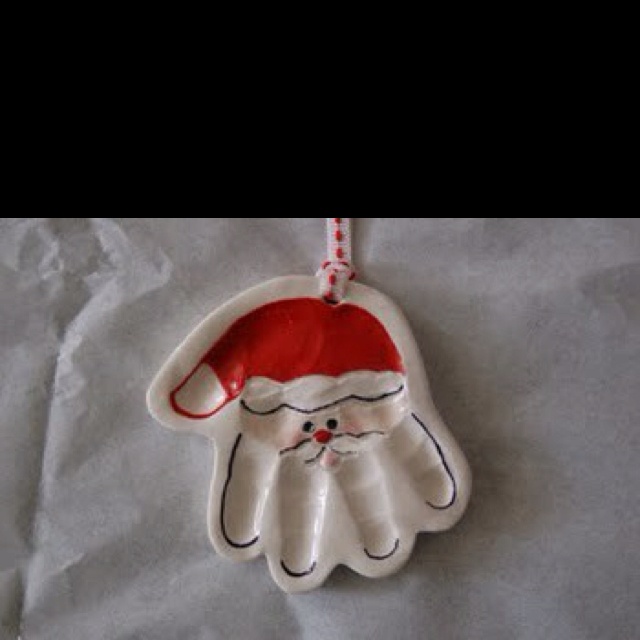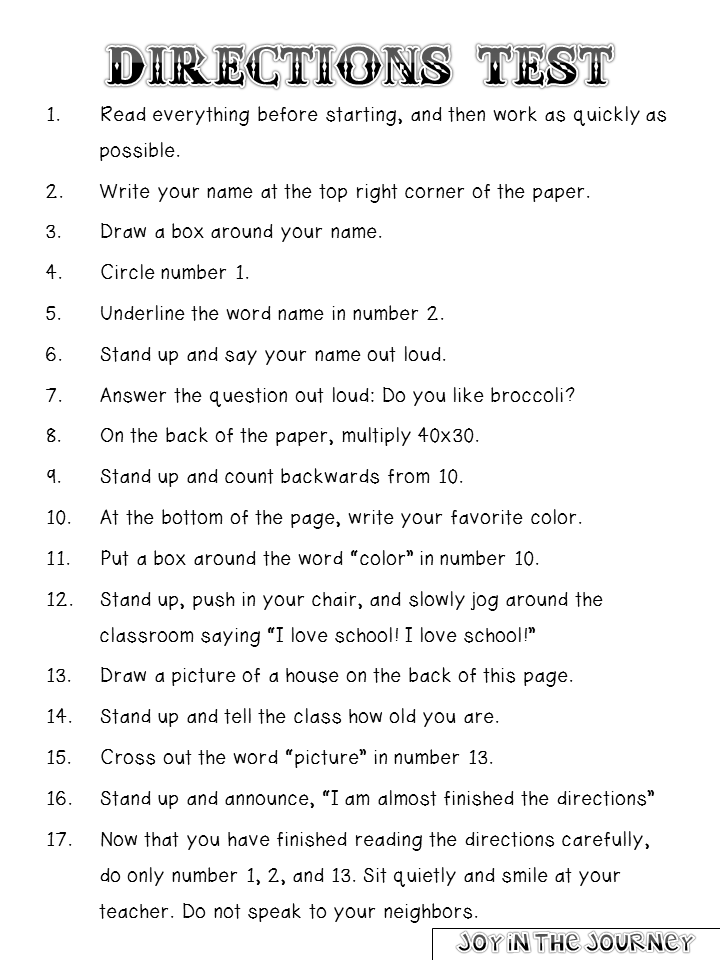How to make ornaments out of flour and water
The Best Salt Dough (for Ornaments and Crafting!) to Make with the Kids
Learn how to make classic salt dough with the kids, with baking, painting, and storage info. This method is straight forward, easy, and thorough—and they a perfect kids holiday gift for grandparents, teachers, and loved ones!
Salt Dough
This salt dough is a staple of childhood and I love doing this Christmas activity with my kids each year—and throughout the rest of the year too! We love to make salt dough handprints, ornaments, and sometimes, just any old shape they want to. It’s an easy project that we can do together—and then share as kid-made holiday gifts, keepsakes, or house decorations.
Salt Dough Recipe
Making salt dough at home is as easy as combining three pantry staples together into a dough. It’s fairly fool proof (as long as you follow the measurements!) and is a recipe that even little kids can help make.
Ingredients in Salt Dough
To make this recipe, you’ll need:
- table salt
- all-purpose flour
- water
TIP: That’s it! (I buy store brand, cheap flour for this since project to keep it very budget-friendly. )
How to Make Salt Dough Ornaments Step-by-Step
Here’s a look at how to make the dough for this salt dough. Scroll down to the bottom of the post for the full information.
- Measure out the flour and water. (photo 1)
- Add the water. (photo 2)
- Stir with a wooden spoon. (photo 3)
- Keep stirring until the dough is mostly together and is hard to stir any longer. (photo 4)
- Knead a few times with hands to bring the dough together. (photo 5)
- Place dough between two pieces of parchment paper and roll out. (photo 6)
TIP: You can divide the dough in sections so multiple kids can have their own dough to work with.
How to Cut Out, Bake and Decorate Salt Dough Ornaments
Once you start rolling, here’s a look at what will follow if you want to make these into ornaments. (Skip the hole poking if you want to just make these as shapes for the kids to paint. )
)
- Roll out, changing directions occasionally, until about 1/4-inch thick. (This may not get precise if you’re working with kids and that’s okay!) (photo 1)
- Stamp cookie cutters. (photo 2)
- Remove the dough around the shapes, then either transfer the whole piece of parchment paper to a cookie sheet OR transfer just the shapes to a parchment-lined cookie sheet. (photo 3)
- Poke holes so you have a place for a string to hang as ornaments. (photo 4)
- Press in a hand to make a handprint, if desired. (photo 5)
- Bake, let cool and decorate! (photo 6)
TIP: Re-roll any remaining dough after Step 3 here to make additional ornaments.
Salt Dough Handprint Ornament
Capturing a handprint in salt dough is a perfect grandparent gift, or a keepsake ornament to make for your own tree. I love pulling out our little collection year after year. Know that getting a good print may take a few tries if doing a baby’s hand!
TIP: Check the size of your round cookie cutter against your child’s hand to make sure that it’s big enough. You may need one that’s 4-5 inches in diameter.
You may need one that’s 4-5 inches in diameter.
Best Paint for Salt Dough Ornaments
If the kids are wearing smocks, the table is protected, and you are reasonably sure they won’t paint all over their hands and faces, I like using regular acrylic craft paint since it holds up best on crafts. With younger kids who may wind up wearing more of the paint, I’d recommend tempura washable paints.
TIP: We put our paint into the base of old egg cartons since we always have those on hand. You can also use paper plates.
How to Preserve Salt Dough Ornaments
To help preserve your finished dried ornaments, you can coat with a layer or two of Mod Podge or spray with a sealer. Either work well. I’d recommend coating or sealing both sides, so do one side and let it dry, and then do the second side. If using the sealer, do it in a well ventilated area without the kids too close by.
TIP: To store these ornaments from year to year, you’ll want to wrap in bubble wrap. Store in a container that won’t be banged around, dropped or exposed to excess moisture.
Store in a container that won’t be banged around, dropped or exposed to excess moisture.
Why is my salt dough puffing up?
If you mistakenly use self-rising flour, they may puff. And sometimes it happens randomly. Keep the oven temperature low and if it happens consistently, you can try baking at an even lower temperature for a slightly longer amount of time.
Tips for Making the Best Salt Dough Ornaments
- If the dough is too wet and sticky, knead in a little more flour. If it’s too stiff, add a little more water. There is a big range in the way different flours absorb liquid, so there is a normal range of variation in liquid needs. It should be easy to work with—soft and not too stiff and not excessively sticky.
- Use paper lollipop sticks or a skewer to make your holes.
- Use a 4-5 inch round cookie cutter to make handprint ornaments.
- Tie on baker’s twine or thin ribbon to hang as ornaments.
- Try to get the dough to an even thickness before baking so the ornaments bake evenly.

- Bake for the time indicated and then longer if your ornaments still feel soft. They should be firm to the touch without much give.
- Let cool fully before painting.
- If you want to paint the background of a handprint ornament, do that before you paint the inside of the hand. Let dry before adding a second color. Some people like to paint the whole thing white or cream to give it a more finished look.
- Use acrylic craft paint for older kids who can be trusted with paint and tempura washable paints with younger toddlers.since it holds up best on crafts. With younger kids who may wind up wearing more of the paint, I’d recommend.
- To help preserve your finished dried ornaments, you can coat with a layer or two of Mod Podge or spray with a sealer.
I’d love to hear your feedback on this project and what your kids thought of it, so please comment below to share!
Prep Time 30 minutes
Cook Time 2 hours
Total Time 2 hours 30 minutes
Author Amy Palanjian
Cuisine American
Course Holiday
Calories 1kcal
Servings 2 dozen ornaments
- ▢ 4 cups flour
- ▢ 1 cup table salt
- ▢ 1.
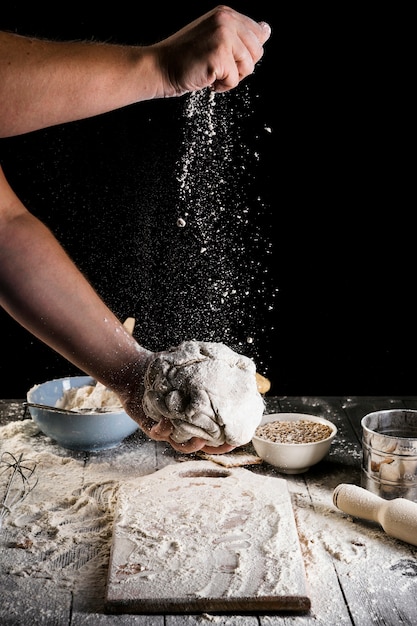 5 cups water
5 cups water
Mix the ingredients together in a large bowl using a wooden spoon. When it becomes too stiff to stir, use clean hands to bring the dough together.
NOTE: If the dough is too wet and sticky, knead in a little more flour, about 1 tablespoon at a time. If it's too stiff, add a little more water, about 1 tablespoon at a time. There is a big range in the way different flours absorb liquid, so there is a normal range of variation here. It should be easy to work with—soft and not too stiff and not excessively sticky.
Knead a few times until the dough is uniform and soft, about 3-5 minutes.
Divide dough into 2 or 4 sections and roll out to about 1/4-½ inch thick between two sheets of parchment paper. This will help prevent sticking.
Cut out with cookie cutters. Transfer shapes to a parchment-lined baking sheet.
Repeat rolling and cutting out shapes to use up the dough.
Preheat oven to 250 degrees F.

Do a 4-5-inch circle and press in a child's handprint if desired.
Use a paper lollipop stick or a skewer to make a hole to hang as an ornament.
If making ornaments, bake for 90 minutes to 2 hours; if baking handprints, bake for 2-3 hours. Continue baking both ornaments and handprints as needed until they are until just firm to the touch, checking every 20 minutes. (It's not a problem if yours take longer than the initial baking time—it varies based on thickness and size...which will likely vary if you are baking these with kids!) They do not need to be rock hard, but should not feel squishy. Handprints will likely take longer than smaller ornaments and may take closer to 4 hours.
Remove from oven, let cool, and paint if desired with acrylic or washable tempera paint.
Once paint is completely dry, seal with Mod Podge if desired.
Mixing Bowl
parchment paper
Mini Cookie Cutters
- Divide the recipe in half to make a smaller portion of dough if desired.
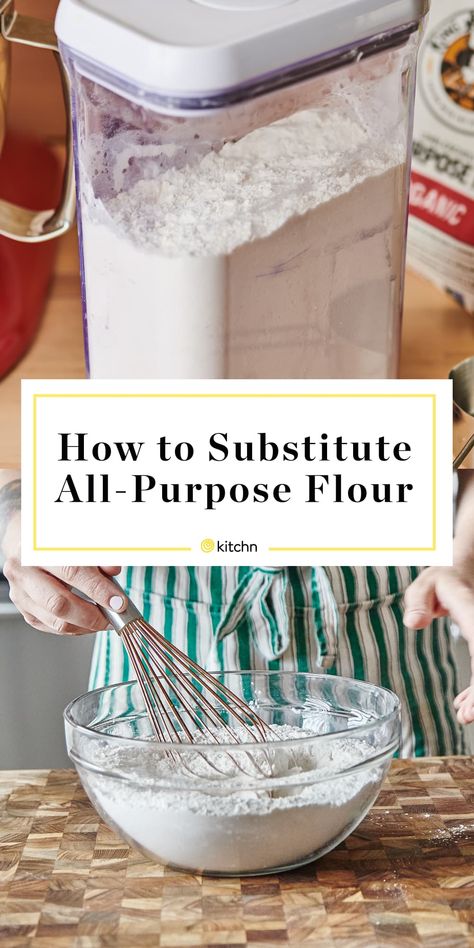
- Use paper lollipop sticks or a skewer to make your holes.
- Use a 4-5 inch round cookie cutter to make handprint ornaments.
- Tie on baker's twine or thin ribbon to hang as ornaments.
- Try to get the dough to an even thickness before baking so the ornaments bake evenly.
- Bake for the time indicated and then longer if your ornaments still feel soft. They should be firm to the touch without much give but do not need to be rock hard. It is not a sign of a problem if yours take longer than mine did to bake—flours and ovens vary!
- Let cool fully before painting.
- If you want to paint the background of a handprint ornament, do that before you paint the inside of the hand. Let dry before adding a second color.
- Use regular acrylic paint for older kids who can be trusted with paint and washable tempera paint with younger toddlers.
- To help preserve your finished dried ornaments, you can coat with a layer or two of Mod Podge or spray with a sealer.

Calories: 1kcal, Fat: 1g, Saturated Fat: 1g, Polyunsaturated Fat: 1g, Monounsaturated Fat: 1g, Fiber: 3g, Sugar: 1g, Calcium: 31mg, Iron: 6mg
Tried this recipe?Rate in the comments and tag @yummytoddlerfood on IG!
Salt Dough Ornament Recipe - The Best Ideas for Kids
Kim 62 Comments
All activities should be supervised by an adult. As an Amazon Associate, I earn from qualifying purchases. This post may contain affiliate links.
Salt dough ornaments are the perfect Christmas craft and activity to do with your kids. Make them to give as gifts or simply to hang on your own tree. We will walk you through our easy salt dough ornament recipe and answer any questions you may have on how to make salt dough!
RELATED: Salt Dough Handprint Recipe
Table of Contents
- Salt Dough Ornament Recipe
- Ingredients Needed to Make This Salt Dough Ornament Recipe
- How to Make Salt Dough – Ornament Recipe
- Get the Recipe
The best part about making salt dough is it’s easy! And you typically already have the ingredients on hand – salt, flour and water. Don’t worry if you don’t have the decoration supplies just yet. Make your batch of salt dough, bake and then let them air dry for a few days before decorating.
Don’t worry if you don’t have the decoration supplies just yet. Make your batch of salt dough, bake and then let them air dry for a few days before decorating.
Just a friendly reminder that salt dough can be dangerous to pets if ingested – please keep out of reach of pets.
We’re going to show you how to make these glittery salt dough ornaments. Your Christmas tree will be glistening with these homemade ornaments!
Ingredients Needed to Make This Salt Dough Ornament Recipe– 4 cups Flour
– 1 cup Salt
– 1.5 cups Water (maybe a little more)
– Christmas Cookie Cutters
– Acrylic Paint
– Glitter
– Clear Glue
– Gold Twine
– Clear glaze spray or Mod podge
How to Make Salt Dough – Ornament Recipe1. Preheat your oven to 200 degrees Fahrenheit.
Preheat your oven to 200 degrees Fahrenheit.
Note: Check what temperature your oven setting is. If your oven temperature is Celsius you will need to bake at a much lower temperature (the lowest setting is usually a good one to start with).
Adults will need to do the baking part, but kids can help decorate!
2. Combine your flour, salt and water and mix well. Knead for 10 minutes. If your dough is too dry, add a little bit more water. If it’s too sticky, add a little bit of flour. It will help to place flour down on your surface when kneading and on your hands.
Keep kneading until the dough becomes really smooth. This takes about 10 minutes.
3. Once you’re done kneading, roll out the dough to about 1/2 cm thickness. The thinner you make the ornaments, the better they will thoroughly bake and dry through. If you make them too thick they will take too long to dry.
4. Using your Christmas cookie cutters, cut out different shapes for your salt dough ornaments.
5. Using a straw, make a hole in the top of the ornament for where you would like the twine to hang.
6. For a faster baking process, we like to let the dough air dry for a day.
Bake for 1-2 hours. If your ornaments are not completely dried through when you pull them out put back in for another hour. The baking time will vary greatly depending on the size and thickness of your ornaments. Larger ornaments will take longer whereas smaller ornaments will take less time. You can also let them air dry for a day before baking and this will cut down on the baking time.
Make sure to flip them when air drying or baking so that the bottoms of the ornaments dry also.
Note: If you notice puffing when baking, it is likely because the ornaments are too thick. In this case, let them air dry for a few days before baking and make sure they are baking at a low temperature for your oven (200 degrees Fahrenheit).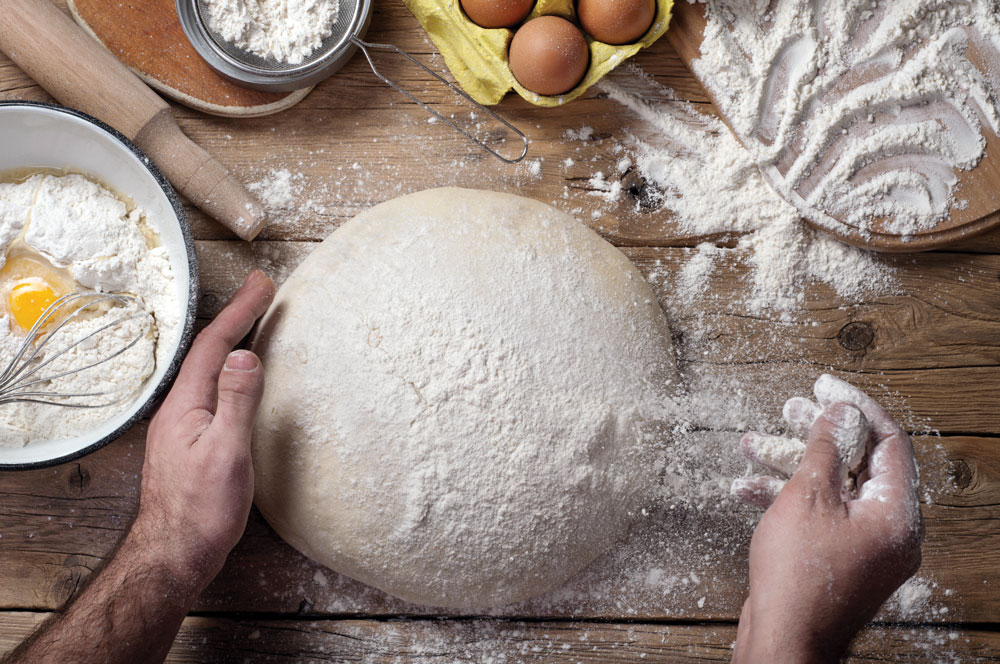
7. Once cool and completely dried, paint with non-toxic acrylic paint. We used white for the snowflake, red for the mitten, green for the Christmas tree and gold for the bell.
8. Before adding the glitter, you’ll need to seal the ornaments. This will help them keep longer. Make sure your ornaments are completely dried through before sealing. Spray with a clear glaze spray (adults only) or finish with mod podge.
9. Now add clear glue on top of your ornament. Shake glitter on top until you fill the ornament with glitter. Kids will love helping with this part!
Once you’re done, add your gold twine for hanging them on the tree.
Storage Tip: Keep in a cool, dry place when not in use.
Prep Time15 mins
Active Time2 hrs
Total Time2 hrs 15 mins
- ▢ 4 cups flour
- ▢ 1 cup salt
- ▢ 1.5 cups water *Maybe a little more water needed once kneaded.

Preheat your oven to 200 degrees Fahrenheit. Important: Check what temperature your oven setting is. If your oven temperature is Celsius you will need to bake at a much lower temperature (the lowest setting is usually a good one to start with).
Adults will need to do the baking part, but kids can help decorate!
Combine your flour, salt and water and mix well. Knead for 10 minutes. If your dough is too dry, add a little bit more water. If it's too sticky, add a little bit of flour. It will help to place flour down on your surface when kneading and on your hands.
Keep kneading until the dough becomes really smooth. This takes about 10 minutes.
Once you're done kneading, roll out the dough to about 1/2 cm thickness. The thinner you make the ornaments, the better they will thoroughly bake and dry through.
 If you make them too thick they will take too long to dry.
If you make them too thick they will take too long to dry.Using your Christmas cookie cutters, cut out different shapes for your salt dough ornaments.
Using a straw, make a hole in the top of the ornament for where you would like the twine to hang.
For a faster baking process, we like to let the dough air dry for a day.
Bake for 1-2 hours. If your ornaments are not completely dried through when you pull them out put back in for another hour. The baking time will vary greatly depending on the size and thickness of your ornaments. Larger ornaments will take longer whereas smaller ornaments will take less time.
Make sure to flip them when air drying or baking so that the bottoms of the ornaments dry also.
Once cool and completely dried, paint with non-toxic acrylic paint. We used white for the snowflake, red for the mitten, green for the Christmas tree and gold for the bell.
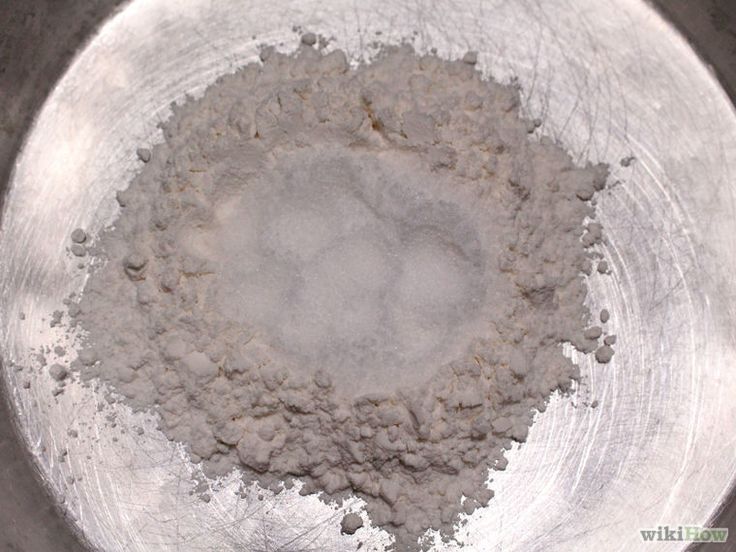
Before adding the glitter, you'll need to seal the ornaments. This will help them keep longer. Make sure your ornaments are completely dried through before sealing. Spray with a clear glaze spray (adults only) or finish with mod podge.
Now add clear glue on top of your ornament and shake glitter on top until you fill the ornament with glitter.
To preserve longer - it is recommended to seal your ornaments.
Storage: Keep stored in a cool, dry place when not in use.
These have to be our favorite salt dough ornaments we’ve made and they look great on the Christmas tree!
Looking for more fun Salt Dough Ideas?
See over 25+ Salt Dough Ornament Ideas – these are such cute keepsakes!
These Salt Dough Handprint ornaments are our most popular salt dough ornament. See how to make these adorable handprint keepsakes!
And for another ornament idea – make these salt dough star ornaments.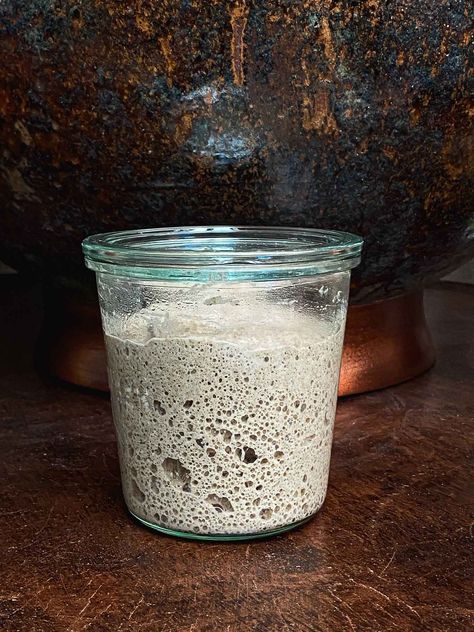 These look great with the bell added!
These look great with the bell added!
Simple cake decoration
Simple cake decoration - openwork pancake chips! Spectacular decor that costs almost nothing! A detailed master class with step-by-step photos and detailed explanations - only with us!
Have a good day and good mood everyone! It seems to me that every day (or maybe every hour) something new, special, made from a variety of, sometimes very unusual ingredients, is born in the confectionery world. You look at the next invention, and immediately want to try to make it yourself! Well, then you figure out how many products and tools you will have to buy for this and ... Well, you understand :)
Therefore, today we will make an excellent and very effective decor that costs almost nothing! Yes!) Of course, skill is required, but this does not scare us, right?) The technology for preparing such a simple decoration for a cake resembles baking pancakes, which is why in the confectionery environment this type of decor is called pancake chips.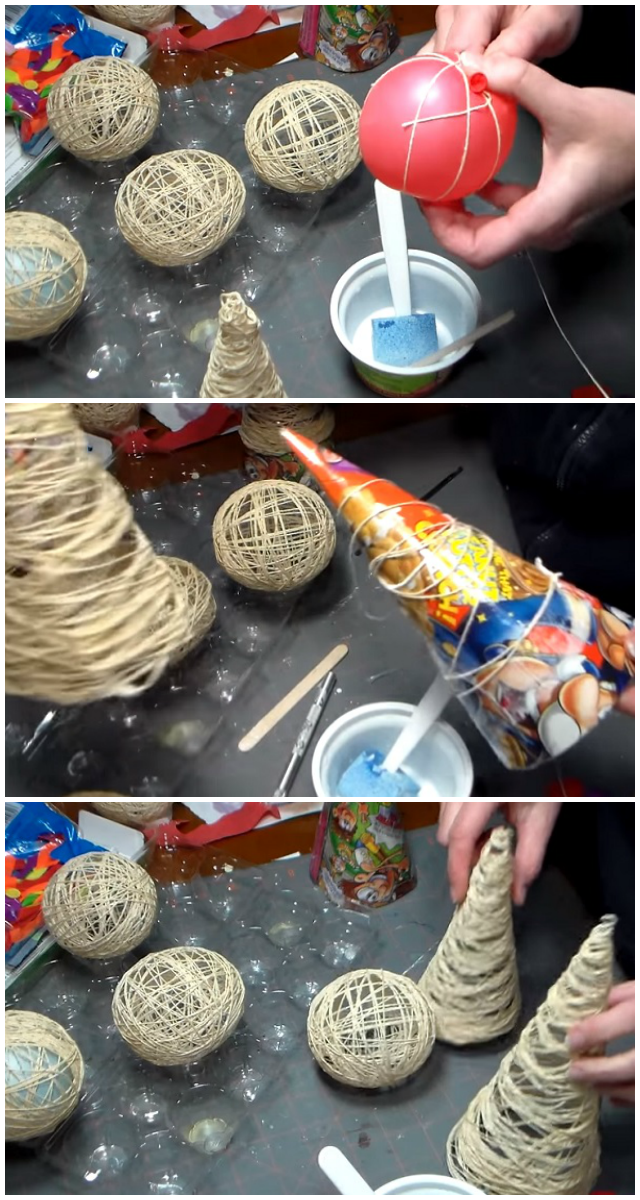
Well, let's go?
Ingredients
Flour - 10g
Water - 90g
Butter - 40g
Food coloring
Let's prepare the ingredients
To prepare the decor, we only need 10 g of flour, 90 g of water, 40 g of odorless vegetable oil and food coloring.
Let's knead the dough!
Add a third of the water to the flour and stir until smooth. If all the water is poured out at once, it will be more difficult to mix until smooth. Then add the remaining water and mix thoroughly again.
Add oil
Add oil and stir again.
Add dye
Depending on how many chips you want to make, you can either dye the whole mix one color or divide it into two or three colors. The main thing when you pour into bowls, remember that fat accumulates on the surface, and the flour settles down, so you need to mix everything thoroughly first, and then immediately, immediately separate it so that it doesn’t turn out that you only have butter in one half, and in the second - flour with water.
Let's bake!
And now the real magic will happen!
Heat a frying pan (preferably with a non-stick coating, otherwise it will be very problematic to remove our chips) to a very hot state and pour a spoonful of the mixture onto it.
Attention! Keep the lid of the pan ready, because the mixture mercilessly begins to splash in all directions! Pour the dough and immediately cover (but do not close completely!) With a lid. If you have a splash guard, you can use that. nine0005
At first, the pancake will bubble violently and the oil will shoot, but after a while, the active actions will stop and the pancake can be removed.
If your pancakes are too bubbly, brittle and breakable, try adding a little flour, or if they are too thick, add a little more oil and water.
Remove excess fat
Put the finished chips on a paper towel to get rid of fat. I must say right away: unfortunately, it will not be possible to get rid of all the fat in this way, but then the pancake can be dried in the oven or in the microwave (literally 5-10 seconds). nine0005
nine0005
Result
That's what we got!
Nice, isn't it?
If you have prepared this simple cake decoration in advance, keep it away from damp places.
Good luck!
Friends, we have a wonderful Vkontakte community! Join.
Author: Anita
Published: 09/22/2017
Category: Decor
Tags: Cake Decor, Decor Ideas, Pancake Chips, Trendy Cakes, MK, Decor, Decoration
Share
Three salt dough recipes for modeling with children: master class and interesting facts creativity with children.
If a child likes to do something with his own hands, but plasticine is already tired, try salty dough. It gives limitless scope for creativity - from making your own salt dough to playing with the resulting crafts. It is also an opportunity to spend time together and discuss the traditions of baking, gingerbread and even literacy. So:
- the salt dough recipes for the article were checked and carefully selected,
- we turned to Elena Chipenko, the tour guide of the Museum of the International Gingerbread in Tula, for interesting facts (and where else to talk about gingerbread?),
- all the ingredients for salty dough, if they are not at hand, you can buy in VkusVille, including with free delivery.
 Go!
Go!
Classic recipe for salt dough without glue
There are many recipes for salt dough. If you are just starting to get acquainted with it, choose a proven classic recipe. It is very simple - both in preparation and in composition.
You will need:
- deep kneading bowl
- 200 ml water
- 300 g flour
- 300 g salt (necessarily fine)
Preparation:
It will take a few minutes to prepare, but you have to wait until the dough has cooled in the refrigerator.
1. Pour 300 g of fine salt into a container.
2. Add 300 g flour (preferably wheat flour), mix.
3. Start adding cold water to the dry mass. A little at a time to see how quickly the flour absorbs moisture. You should get a thick but not dry dough. nine0005
4. Knead the dough with your hands until it becomes elastic.
5. Wrap the dough in plastic wrap and refrigerate for 2-3 hours.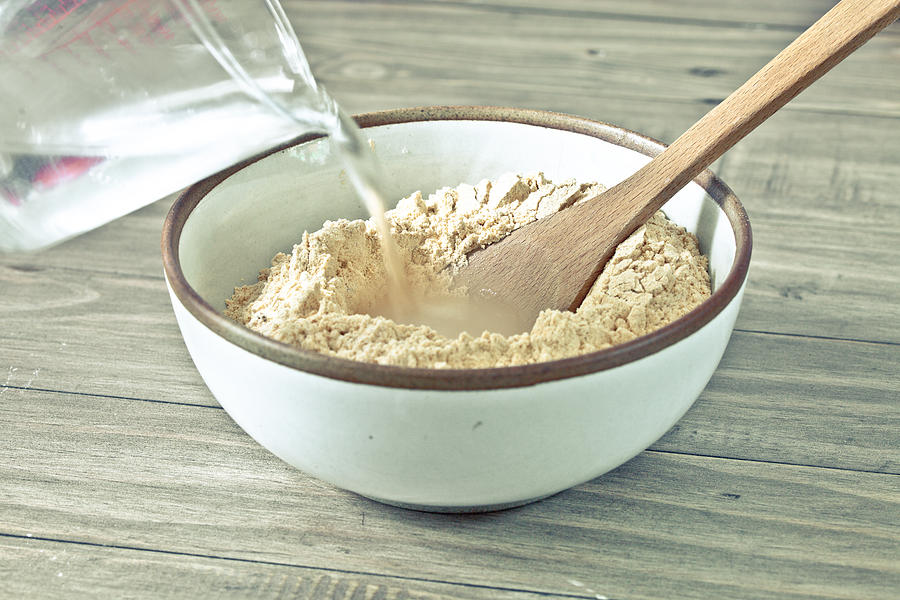
Done! You can start getting creative.
Did you know that…
… Ancient Egypt is considered the birthplace of gingerbread. Allegedly, it was then that honey was added to the dough for bread. He, as a natural natural preservative, increased the shelf life of the dough.
Honey is still added to bread, pastries, drinks and even pickles. Read more about interesting products with honey in the article “Honey Cucumbers: 11 Unusual VkusVill Products with Honey”. nine0005
Do you know what this yellow man is in the photo? This is Fudik, a character from VkusVill who helps to find food and goods for children in the store. Here you can find out how it got to us from space. And here is useful information for parents about what the “Fudik” label on VkusVill products means. You can also buy a coloring game about our hero's space adventures.
1
Space coloring board game
50 g
165 rub 165. 00 165.00
00 165.00
Disappearing species
We also remind you that you can order sets for modeling clay and plasticine with free delivery:
“Airy” plasticine, 24 colors
“Marshmallow” dough-plasticine, 6 colors
Dough-plasticine, 6 colors
“Light” plasticine, 12 colors
Glowing polymer clay
Polymer clay for 10 colors
Modeling clay "Light and ball clay 5+5"
1
Air clay 24 colors
240 g
255 rub 255.00 255.00
1
Marshmallow Dough, 6 colors
310 g
175 rub 175. 00 175.00
00 175.00
1
Dough clay 6 colors
310 g
165 rub 165.00 165.00
Salt dough with PVA glue
If you add PVA glue to salt dough, it will become more plastic, and figurines made from it will become stronger. By the way, such crafts will also dry faster. nine0005
You will need:
- 1 tablespoon of PVA glue
- 100-150 g of water1
- 200867
- 200 g of fine salt
- 1 teaspoon of sunflower oil
- Vanilin, cacerias or cocoa according optional
- deep kneading bowl
Preparation:
1. Combine flour and salt in a bowl.
Combine flour and salt in a bowl.
2. Pour cold water into a separate container and add PVA glue. Stir. nine0005
3. Slowly pour the mixture of water and glue into the bowl of flour and salt. You may need a little more or a little less liquid - it all depends on the flour.
4. Try kneading a small piece of dough and stretching it. If it does not crumble, then there is enough water.
5. To make the dough more plastic and less sticky to your hands, you can add a teaspoon of vegetable oil to it.
6. On the table, knead the dough with your hands to form a plastic mass. nine0005
7. Wrap the dough in cling film and leave for half an hour. During this time, the flour will release the gluten and the dough will become more elastic.
Tip: If you don't like the smell of glue, add a pinch of cinnamon, vanilla or cocoa to the dough. Then the crafts will be fragrant and more comfortable.
Do you know that…
— the name of the gingerbread is based on spice, that is, the addition of spices. Previously, spices were brought from the East. But not everyone could afford such an expensive ingredient, so they began to add, for example, horseradish to give the gingerbread a spicy taste. nine0005
Previously, spices were brought from the East. But not everyone could afford such an expensive ingredient, so they began to add, for example, horseradish to give the gingerbread a spicy taste. nine0005
- At the same time, the first mention of the Tula printed gingerbread was found in 1685. It was so long ago that even the New Year was then celebrated on September 1, and only 15 years later Peter I changed this date to January 1. Read more interesting things in the article "How Christmas and New Year were celebrated in St. Petersburg in the 19th century and what they ate on holidays."
— Why are gingerbreads called printed? This is because they are formed using special printed boards with embossed carvings, inscriptions, and drawings. Making such a board for a gingerbread is painstaking and difficult, because you need to take into account the symmetry, observe the multi-level pattern, and cut out the letters and numbers (they, by the way, must be written backwards, one mistake - and the board needs to be redone). nine0005
nine0005
The printing method for making gingerbread is the most popular in our country. In Tula, gingerbread is prepared in this way even today. When creating crafts from salt dough, try adding a pattern from a sand mold - “print” your craft.
By the way, along with the ingredients for the dough, we can bring molds that will be useful for curly cookies - a gingerbread man and a Christmas tree.
Colored salt dough
Colored dough is more fun to make. To make it, just add natural dyes or gouache to the finished base for salt dough. nine0005
For the test you will need:
- 150 g of flour
- 150 g of salt
- 100-150 g of water
for natural dyes:
9000 9000
 5 teaspoons
5 teaspoons Preparation:
- Combine salt and flour in a bowl.
- Gradually add water, mixing thoroughly until a thick paste is obtained.
- On the table, knead the dough with your hands to form a plastic mass.
- Add color according to the instructions below.
For pink, squeeze some juice from fresh beets, add a pinch each of salt and flour, mix. Add the mixture to the prepared salt dough, mix well. Wrap the dough in cling film and put it in the refrigerator to "brew". nine0005
For yellow or brown dough, use turmeric or cocoa. Mix them with water, add to the finished dough and knead until a uniform color.
If there are no natural dyes, use regular gouache. Knead the dough on the table. Divide into parts according to the number of colors. Next, lightly knead each piece of dough and place a portion of gouache on top. "Wrap" the paint in the dough, like filling in a pie. Thoroughly knead until a uniform color.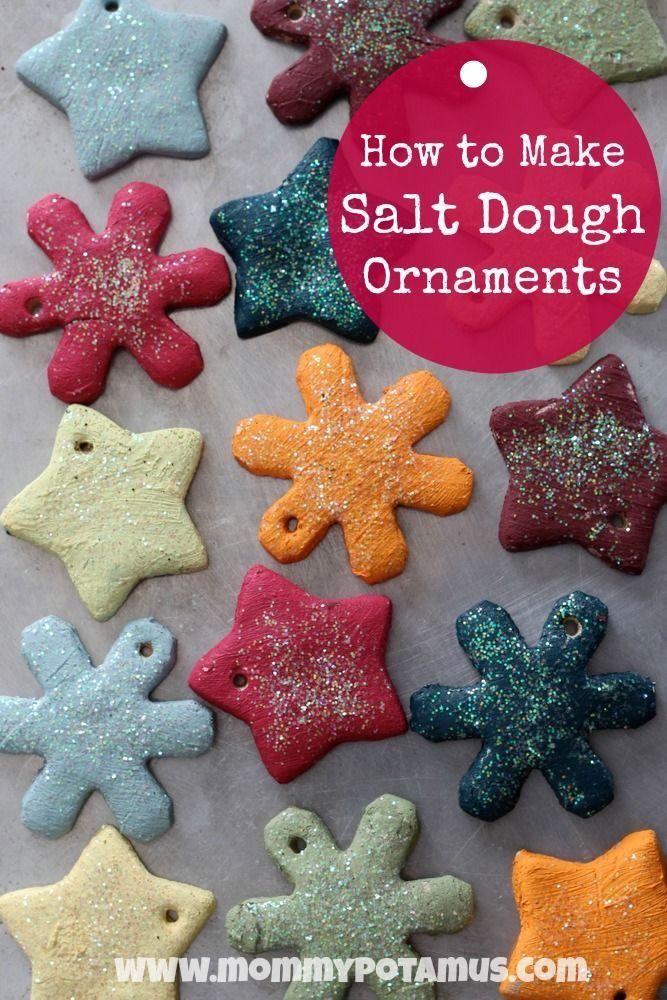 Repeat with other colors. nine0005
Repeat with other colors. nine0005
Wrap the colored dough in plastic wrap and refrigerate for 1-2 hours. Ready! And don't worry that there is so much to do by hand - this part of the process is almost more fun than creating future crafts.
Did you know that…
… until now, up to 97% of the work in creating gingerbread is done by hand. At the same time, each manufacturer has his own recipe, which he keeps secret.
You can create your own salt dough recipe by adding a unique combination of colors and spices. And as an idea for figurines, try letters. After all, it turns out that in the old days children were taught to read and write with the help of gingerbread letters. This sweet was a favorite delicacy. Remember the letter - ate the gingerbread, but did not remember - you will be punished. Hence the expression about the stick and the carrot. nine0005
When modeling, to create beautiful patterns on the surface of the dough, you will need :
- figured rolling pins (they are sold separately or come in a set with plasticine, for example, in VkusVille there is a kit for modeling "Cooking Pizza")
- toothpicks
1
Pizza making kit
466 g
385 rub 385.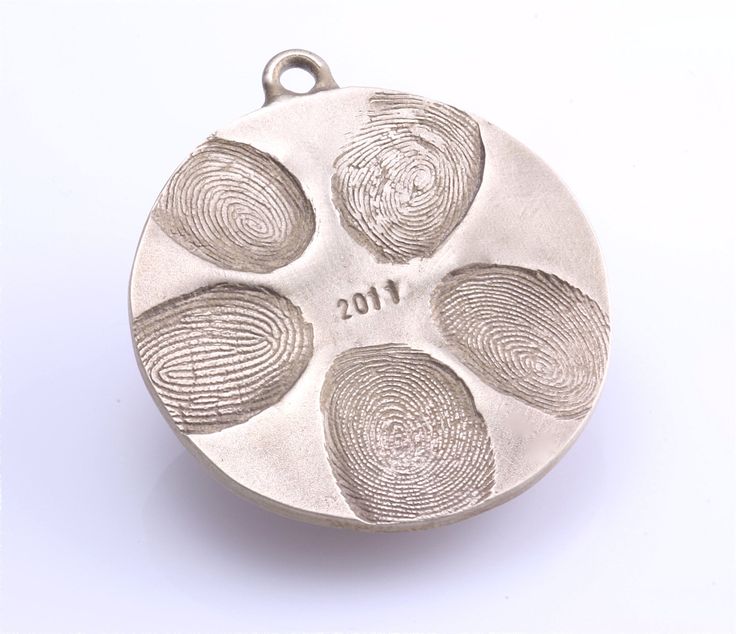 00 385.00
00 385.00
- marker caps
- pasta
- buttons
- beads
- forks, scissors and much more. Don't limit your imagination!
How much and how to bake salt dough
Making crafts from salt dough is a long and exciting process. After preparing the dough and sculpting, the craft must be dried and then painted.
Two drying options:
- just leave the craft on the windowsill. A thin one will dry in a day, a more voluminous one may take a couple of days;
- there is a way to speed up the process and dry the craft in the oven. Line a baking sheet with foil or parchment paper and place in a cold oven.
Dry in the oven in three stages:
- 1 hour - at a low temperature of about 50 degrees,
- 1-2 hours - at a temperature of about 100 degrees,
- 30 minutes - at a temperature of 140 degrees.

If you have a gas oven, cut this time in half.
Check if the craft is dry by tapping it. If the craft "rings" - then it's ready. Leave the figurine to cool and then you can paint.
Important: do not dry crafts in the microwave. With this heating, the figurines are deformed.
While the figures are drying, you can make a paper panel. First you need to color it - with pencils, felt-tip pens, whatever you want. And then assemble a light and delicate voluminous craft..
1
3D Panel Paper Puzzle Toy
41 g
215 rub 215.00 215.00
How to color salt dough products
Children can use all their imagination in salt dough products.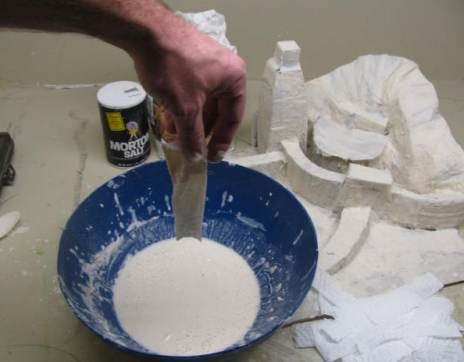 But I can start painting and decorating only after the figures dry well.
But I can start painting and decorating only after the figures dry well.
You can color the craft with gouache, watercolors, acrylics and even finger paints.
You can apply some glue and decorate the craft with sequins or beads. And if you make figures from colored dough, just dry it. nine0005
To make the colors brighter and not fade, it is permissible to cover the craft with varnish. You can use colorless nail polish or unscented furniture polish. Only acrylic varnish is undesirable, since gouache on crafts can spread.
Q&A
Why does salt dough crack when dried?
The dough cracks because it is too wet and contains too much water. Or you overdid it with vegetable oil. To fix this, simply add more flour to the dough. nine0005
How do I keep the dough from sticking to my hands?
Just add a little vegetable oil to the dough while kneading.
Can salt dough be stored?
Usually the dough is stored for 3-4 days in the refrigerator without loss of properties and plasticity. However, when interacting with air, it can change color and lose elasticity. When storing, make sure that the container with the dough is airtight, or wrap the dough with cling film in several layers and / or a bag.
However, when interacting with air, it can change color and lose elasticity. When storing, make sure that the container with the dough is airtight, or wrap the dough with cling film in several layers and / or a bag.
Interests
- For children
1
Quick view
Cocoa powder
100 g
RUB 123 123.00 123.00
2
Quick view
Ground turmeric, 10 g
10 g
35 rub 35.00 35.00
3
Quick view
Premium wheat flour
1 kg
72 rub 72.00 72.00
4
Supermarket
Quick View
Pizza Making Kit
466 g
385 RUB 385.